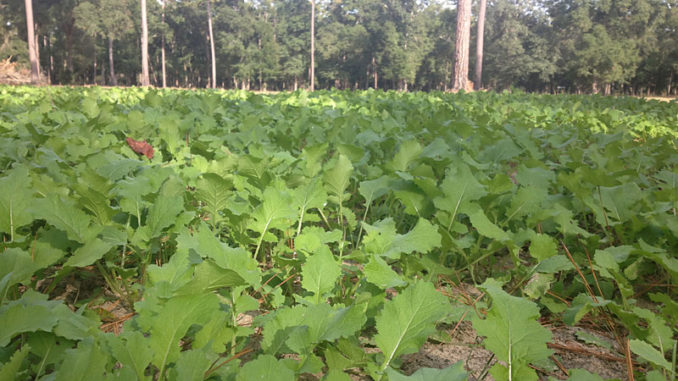
It’s not too late for a food plot
The fall season has arrived in the Carolinas and the time for hunting down whitetails has crept up. It isn’t too late to plant food plots for the cool season to create a reliable food source to benefit wildlife and to bring those bruiser bucks within shooting range.
But September in the Carolinas can either feel like a cool fall day or like the summer sizzler. And extended heat can lead to dry conditions. Decisions that are made in September will ultimately determine the productivity of cool season food plots. Landowners can reduce their risk by following a few important guidelines.
Any newly established food plot will always start off with seed and new tender plants that have nature sometimes working against them. Seed depth, moisture content, competition, and nutrient availability will ultimately control the success or failure of a food plot.
What are the leading causes of food plot failures anyway? Failures come from incorrect planting depth, unsuitable pH and critical nutrient availability, competition, and premature over-browsing.
As soon as the seeds germinate, their vulnerabilities get highlighted from the start. And initially, the planting depth is critical for survival. Seeds come in all shapes and sizes. But basically, the size of the seed will directly control the depth of planting. Deeply planted seeds will prevent the small plant’s root system from drying out. And it enables the plant to gain access to a deeper layer of nutrients embedded in the soil. But the deeper the planted seed, the further the tiny plants have to travel vertically to reach the soils surface.
Planting depth is critical
Seed size is important and is directly proportional to the depth of planting. The smaller the seed, the shallower the seed can be planted. And the larger the seed, planting depth can increase somewhat. The seed itself is made up of an embryo and an endosperm. The endosperm is the food source for the embryo that is packed with carbohydrates, proteins, and lipids to fuel early development.
The small plants must first utilize this energy source to nourish the plant prior to reaching the soil surface. Plants obtain energy from the sun through photosynthesis. But since no sun is available below the soil surface, plants must utilize their endosperm as an energy source prior to reaching sunlight. So, seed planting depth is critical. Plantings should never be planted deeper than the recommended depths.
After the tender shoots erupt through the soil surface, the next phase of development occurs and is among the most important steps in the early stages. By this time, the tender shoots are extremely vulnerable to environmental conditions. Their plant walls are tender and soft. And they have exhausted all of their endosperm. Now they must grow out a couple of leaves or wide shoots to begin photosynthesis to create critical energy for growth. These brand-new plants need full sunlight without any aerial competition that would impede energy production from the sun. And again, these small plants’ leaves, shoots, and roots are extremely tender, supple, and vulnerable to desiccation.
Soil pH plays a big part in food plot success
Rainfall is important during this phase to keep every plant part from the roots to the shoot-tips moist. But too much rainfall can drown out these plants and prevent respiration, a critical component of photosynthesis. Not only do these plants need moisture to prevent desiccation, but they also need access to the gas, carbon dioxide, that is a critical component to photosynthesis. Without carbon dioxide, plants wouldn’t be able to produce energy and they would quickly die as soon as the endosperm is fully depleted.
After the food plot plants are able to grow past these early phases of development, the plants have developed more and their root systems and above-ground structures have become more resistant to drying out.
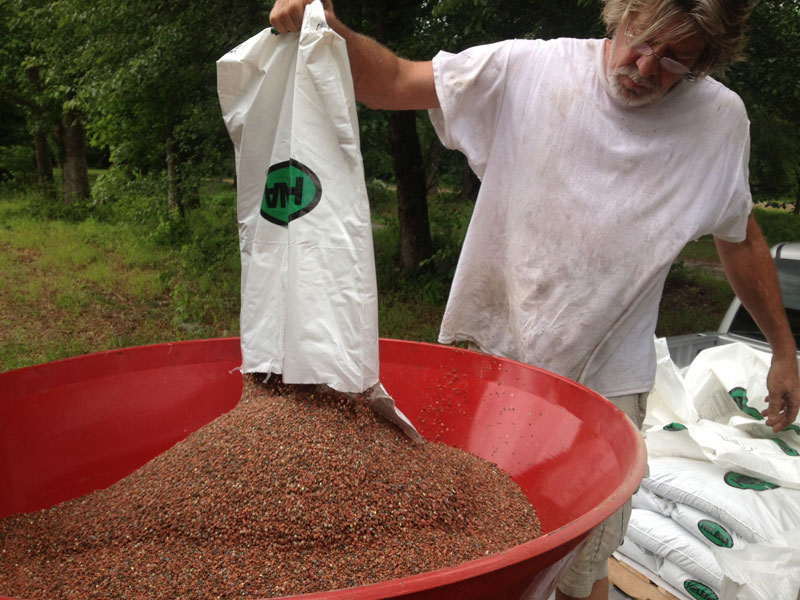 At this point, the remaining leading causes of planting/growing failures are from over-browsing and unsuitable micro- and macro-nutrient availability. Plants can only grow with the available macro- and micro-nutrients and that typically comes from fertilization and prescribed soil amendments. But these nutrients must be soluble in order for plants to uptake them into their tissues. And nutrient solubility is completely a result of chemical reactions that take place from soil supplements AND the pH of the soil environment.
At this point, the remaining leading causes of planting/growing failures are from over-browsing and unsuitable micro- and macro-nutrient availability. Plants can only grow with the available macro- and micro-nutrients and that typically comes from fertilization and prescribed soil amendments. But these nutrients must be soluble in order for plants to uptake them into their tissues. And nutrient solubility is completely a result of chemical reactions that take place from soil supplements AND the pH of the soil environment.
The soil pH directly controls the chemical reactions in the soil. And for most food plot plants, a higher pH between 6.0 and 7.5 is typically needed to convert the soil amendments into soluble forms of micro- and macro-nutrients that the plants can utilize for growth.
Overbrowsing
The only way to ensure the soil amendments will benefit the plants is from a soil test prior to planting. And if the soils are too acidic prior to planting, the plants will most likely suffer right after the endosperm is exhausted. They will essentially run out of critical nutrients that are needed for development and will either die or get overtaken by competing vegetation.
Competing vegetation can be an issue anytime. But it is typically a greater issue in the springtime with warm season plantings. Yet, pre-plant herbicide applications and mechanical preparations can allow for the target plants to thrive and control competition effectively for a successful plot.
Over-browsing can always be an issue during the early stages of growth. It seems silly discussing when landowners get upset that the target animals are eating the food that was planted for them. But the plants need a little time to get established to provide longevity.
Over-browsing can be reduced by erecting scent barriers, fences, or some visual deterrents that can give the new plots a few weeks of growing time. But for the early season hunters, over-browsing early can also be perceived as an early season opportunity as well.
Food plot failures can never be avoided completely because humans just can’t completely control nature. Too many variables are out of our control. But growing plants from the seed up isn’t a new endeavor either. And landowners can learn from their mistakes and mistakes of others to create a viable food source for the deer and other wildlife for the fall and winter season.
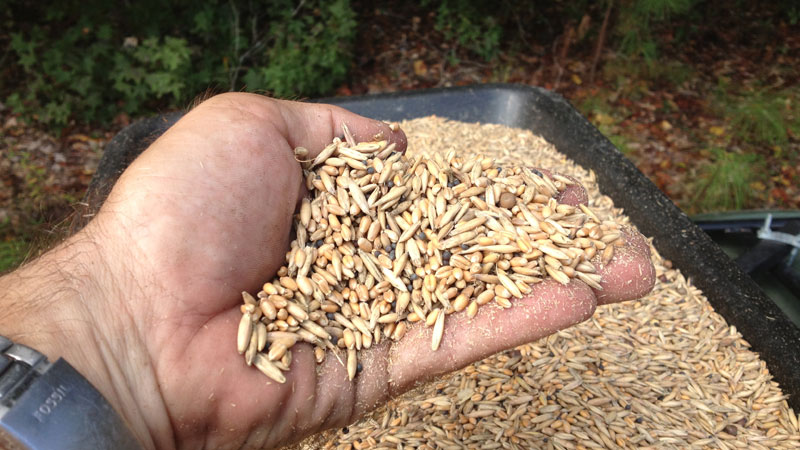
Seed size determines planting depth:
For seeds to have the best chance at blooming into full food plots, they must be planted to the proper depth. This is a critical step that if not followed, often leads to failed food plots.

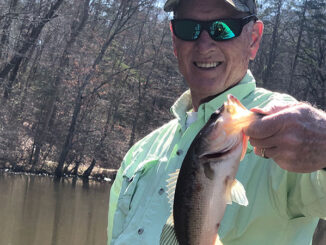

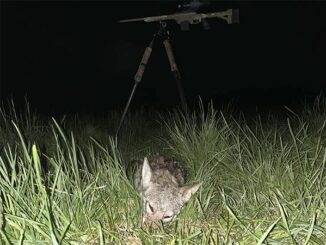

Be the first to comment